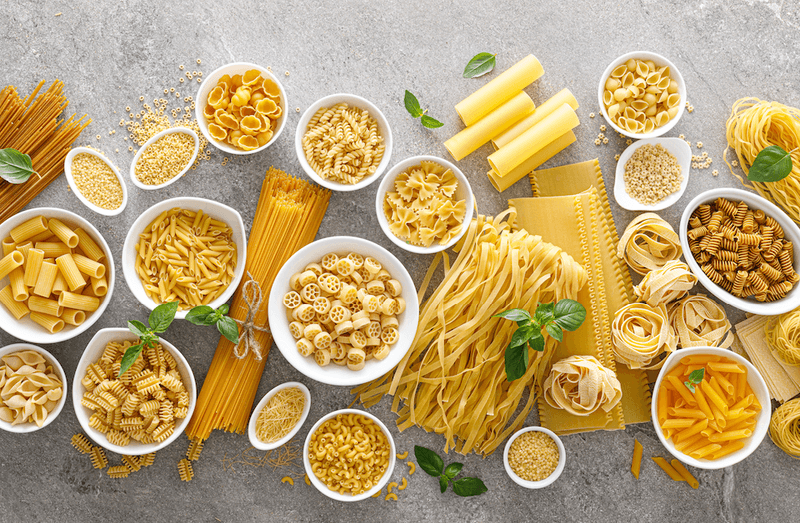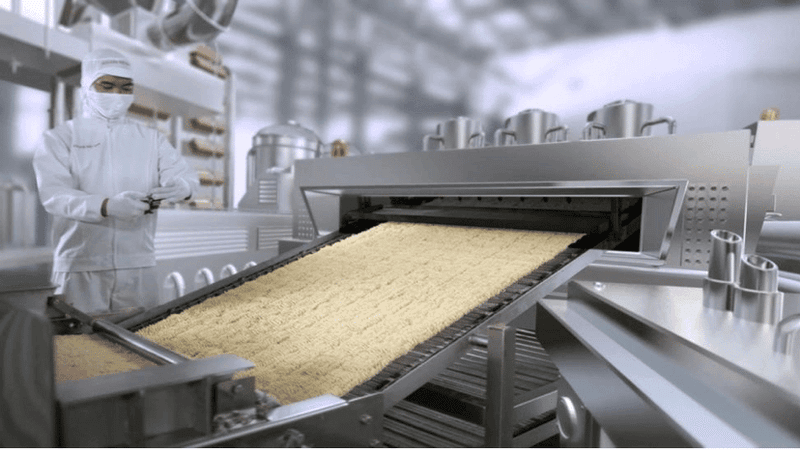Sustainable Pasta and Noodle Production Methods: Water Conservation and Treatment Practices
The global demand for pasta and noodles continues to grow, but with this demand comes the need to adopt sustainable production methods, particularly concerning water usage. Pasta and noodle production, like many food manufacturing processes, is water-intensive, requiring significant amounts of water for dough mixing, boiling, and cleaning equipment. In addition, the industry generates wastewater, which can contain starches, oils, and other byproducts that need proper treatment before being released back into the environment.
This blog explores sustainable practices that focus on water conservation and wastewater treatment in pasta and noodle production, highlighting how manufacturers can minimize their environmental impact while maintaining high-quality products.

Efficient Water Usage in Pasta and Noodle Production
One of the critical challenges in pasta and noodle manufacturing is the substantial water consumption throughout the production process. Manufacturers are now exploring ways to use water more efficiently to reduce waste.
Optimizing Water in Dough Mixing
Water is a crucial ingredient in the pasta and noodle dough-making process. However, manufacturers are looking at ways to optimize this step by precisely controlling water content to avoid excess usage. Automated systems that monitor and adjust water levels during dough preparation can help ensure that only the necessary amount is used, reducing water waste.
Water-Saving Equipment for Boiling
Boiling noodles and pasta requires a considerable amount of water. Manufacturers are adopting advanced boiling systems that recirculate and reuse water. These systems reduce water consumption and lower the energy required to heat large volumes of water. Some producers are also exploring vacuum steam cooking techniques, which significantly cut water usage during the cooking process.
Closed-Loop Water Systems for Equipment Cleaning
Cleaning production equipment and maintaining hygiene standards in pasta and noodle manufacturing also demand large quantities of water. One solution is implementing closed-loop water systems, where the water used for cleaning is treated and reused within the facility. This approach drastically reduces freshwater consumption and helps maintain a clean production environment.

Wastewater Treatment in Pasta and Noodle Manufacturing
The wastewater generated in pasta and noodle production contains various organic materials, including starches and oils, which must be treated to avoid environmental contamination. Several sustainable wastewater treatment practices are being adopted by manufacturers to ensure that water can be reused or safely discharged.
Starch Recovery and Reuse
Starch is a significant component of the wastewater generated in pasta and noodle production. Instead of letting this valuable byproduct go to waste, manufacturers are implementing starch recovery systems. These systems filter out starch from the wastewater, allowing it to be reused in other food products or sold to industries that require starch-based ingredients, such as animal feed producers. This practice not only reduces the environmental impact of wastewater but also adds value by creating a secondary revenue stream.
Biological Treatment Systems
Biological treatment systems, such as activated sludge or anaerobic digesters, are widely used to treat wastewater in pasta and noodle production facilities. These systems rely on microorganisms to break down organic materials in the wastewater, reducing pollutants and improving water quality. By implementing such systems, manufacturers can efficiently treat their wastewater before it is either reused in production or discharged into the environment.
Membrane Filtration for Advanced Treatment
Membrane filtration is another advanced wastewater treatment technology used in pasta and noodle production. This method involves passing wastewater through semi-permeable membranes that filter out contaminants, including solids, oils, and starches. The treated water can then be reused for non-potable applications such as cleaning or cooling, further reducing the facility’s overall water footprint.

Water Conservation and Reuse Strategies
To further enhance sustainability, many pasta and noodle manufacturers are adopting water conservation and reuse strategies to minimize their overall water consumption and promote circular water use within their facilities.
Rainwater Harvesting
Rainwater harvesting systems collect and store rainwater for use in non-potable applications, such as equipment cooling or facility cleaning. This strategy helps reduce reliance on freshwater sources and cuts overall water consumption. Implementing rainwater harvesting also allows manufacturers to tap into a natural water source, which can be particularly beneficial in regions where water scarcity is a concern.
Greywater Recycling
Greywater recycling involves collecting and treating relatively clean wastewater from specific processes, such as equipment rinsing or cooling, and reusing it in other stages of production. For instance, water used to cool machinery can be recycled and reused for initial equipment rinsing or pre-cleaning stages. This practice reduces the demand for fresh water and helps manufacturers lower their water footprint.
Energy and Water Efficiency in Production
Beyond water conservation and treatment, integrating energy efficiency with water management is crucial for achieving sustainable pasta and noodle production.
Heat Recovery Systems
Boiling pasta and noodles produces significant heat, much of which can be recovered and reused within the production facility. Heat recovery systems capture waste heat from boiling processes and use it to preheat water for other steps in production or cleaning, reducing both energy and water consumption. By combining heat and water management, manufacturers can significantly lower their overall environmental impact.
Smart Water Monitoring Technologies
Implementing smart water monitoring systems allows manufacturers to track and optimize water usage throughout their production processes. These systems use sensors to detect water leaks, measure water flow rates, and analyze usage patterns. By providing real-time data, smart monitoring helps manufacturers identify inefficiencies and areas where water use can be reduced, ultimately leading to more sustainable production practices.
Consumer Awareness and Eco-Friendly Branding
As consumers become more environmentally conscious, pasta and noodle manufacturers are leveraging sustainable water practices to enhance their brand reputation. By promoting water conservation, waste reduction, and environmentally friendly wastewater treatment methods, companies can appeal to eco-conscious consumers and differentiate themselves in the competitive market.
Transparency in Water Management
Many companies are now providing transparency about their water conservation efforts and wastewater treatment practices. By openly sharing sustainability reports or certification achievements related to water management, they are building trust with consumers who prioritize environmentally responsible brands.
Water Footprint Labeling
Some manufacturers are beginning to include water footprint labels on their pasta and noodle packaging. These labels indicate the amount of water used to produce the product, helping consumers make informed choices about the environmental impact of their food purchases. This practice aligns with the growing demand for eco-friendly products and encourages sustainable consumption habits.
Conclusion
Sustainable pasta and noodle production methods that prioritize water conservation and wastewater treatment are essential for reducing the industry's environmental impact. From optimizing water usage in production to implementing advanced wastewater treatment systems, manufacturers are making significant strides in promoting sustainability. As water scarcity becomes a global concern, these practices not only help preserve vital resources but also contribute to a more environmentally responsible food industry. By adopting these innovative water management solutions, pasta and noodle manufacturers can continue to provide high-quality products while safeguarding the environment for future generations.